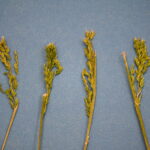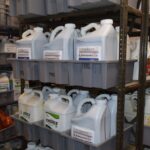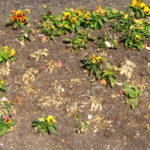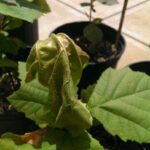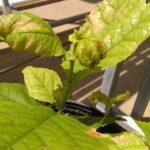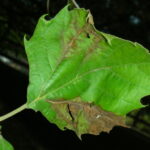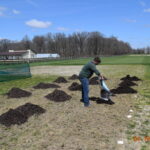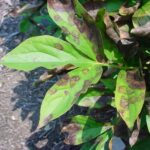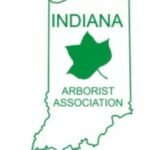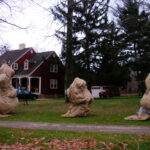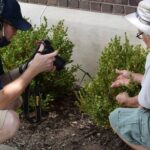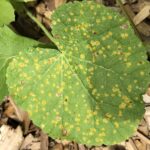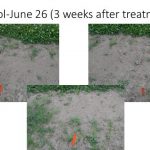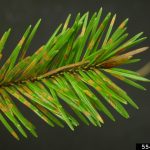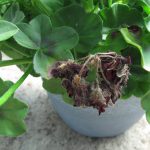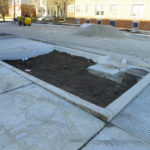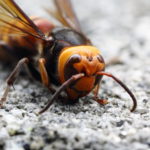Resources for landscapes and gardens in the Midwest
Search Results: weed
Over the past week I have identified three different fowl bluegrass (Poa palustris) samples sent in to the Purdue Plant & Pest Diagnostic Lab (https://ag.purdue.edu/department/btny/ppdl/). This is not concerning, just unusual. This is not a grass species that I see that often, but I have seen several samples this year,[Read More…]
Read MoreBlack root rot (BRR), caused by the fungus Thielaviopsis basicola,has a host range of several hundred plants. In the landscape, the most common hosts include pansies (Fig. 1), and vinca, along with calibrachoa and petunia. In perennial hosts, it often infects lavender, phlox, milkweed and butterfly-weed (Asclepius spp.). Even woody[Read More…]
Read MoreWhile fungi are responsible for many of our foliar disease problems, different fungal pathogens present as problems throughout the country, depending upon the host plant grown and the environmental conditions. This is a brief overview of several common types of fungal leaf diseases occur in Indiana and throughout North America[Read More…]
Read MorePesticide drift can occur virtually anywhere — between neighboring farms, farms and residential properties, or neighboring residential properties. Whether it’s a next-door neighbor or a farmer who owns the field adjacent to your property, they have the legal right to apply pesticides to their property or property they lease. However,[Read More…]
Read MoreWhen spring mulching occurs, most companies will apply a preemergence herbicide for extending weed control. It is well known that the combination of mulch and preemergence herbicides is a very effective method in controlling weeds (https://www.purduelandscapereport.org/article/cultural-plus-chemicala-good-weed-control-combo-in-landscape-beds/). When applying preemergence herbicides with mulch, which should be first for the most effective[Read More…]
Read MoreLeaf blotch, also called red spot and measles, is a common disease of peony caused by the fungus Graphiopsis chlorocephala (=Cladosporium paenoiae). The disease has multiple names because there are multiple symptoms. Lesion on leaves and stems can vary from tiny red spots (“measles”) to larger brown or purple blotches[Read More…]
Read MoreThe Indiana Arborist Association will be hosting a virtual conference from Jan. 26-29, 2021, in lieu of its 73rd annual in-person meeting. The virtual event will offer a diverse group of speakers and topics in order to engage professionals, volunteers, managers and decision-makers alike. “As our organization gathers virtually together[Read More…]
Read MoreJoin us for the 2020 Turf and Landscape Seminar! Learn the latest research and best management practices from Purdue’s Green Industry Specialists. The seminar is available now until November 18th with a live question and answer session with the specialists on November 19th. All participants will receive a free copy[Read More…]
Read MoreAs the 2020 gardening year draws to a close, now is the time to ensure a successful gardening season next year, for you or your customers! Sanitation is a cornerstone of integrated pest management and is essential for good plant health management. Throughout the year, we have been plagued with[Read More…]
Read MoreOne of the most common weeds that present significant challenges to both landscapers and growers are thistles. There are several reasons that thistles are difficult to control, including thousands of viable seeds per plant (Fig. 1), rhizomatous growth characteristics (Canada thistle) (Fig. 2), and large root system (Fig. 3). There[Read More…]
Read MoreThe Purdue Landscape Report Team is excited to offer you an online learning opportunity on Wednesday, August 19th at 12:00 pm (Eastern) via Zoom and Facebook Live. This is part of our on-going, biweekly series. The topics and speakers will vary each session, so check out the newsletter every two[Read More…]
Read MoreHollyhock (Alcea spp.), an anchor plant for the back of the cottage garden, bloom mid-summer with numerous flowers on tall spikes, providing beauty for us, and food for bees, hummingbirds and butterflies. The most common varieties are biennial, taking two years to complete their lifecycle, although some persist as short-lived[Read More…]
Read MoreMany are familiar with Rhizosphaera needlecast of spruce. If you aren’t, please see these two articles by Janna Beckerman and Megan Haas for more information about the disease and it’s management on spruce. The common name for the disease, needlecast, describes the ultimate fate of the needles: they are cast[Read More…]
Read MoreGray mold (causal agent = Botrytis cinerea) is one of the most common diseases affecting bedding plants. Host commonly include (but are not limited to): begonia, carnation, chrysanthemum, cyclamen, geranium, impatiens, marigold, million bells, petunia, vinca and zinnia. Fortunately, gray mold is one of the easiest diseases to manage. By[Read More…]
Read MoreSoil is the ‘lifeblood’ of plant health. Many people tend to focus more on above ground portions of the plant than the below ground environment. We should always remember that a plant is only as healthy as its roots. Knowing the basics of soils will help in understanding the health[Read More…]
Read More- « Previous
- 1
- 2
- 3
- 4
- Next »
Sign-up to receive email news and alerts from Purdue Landscape Working Group:
